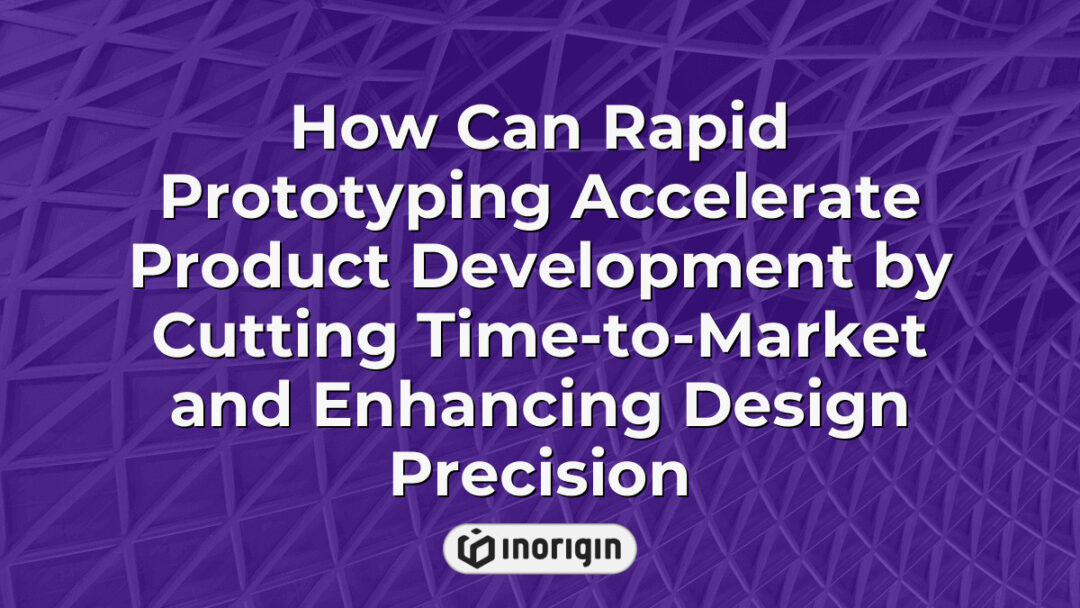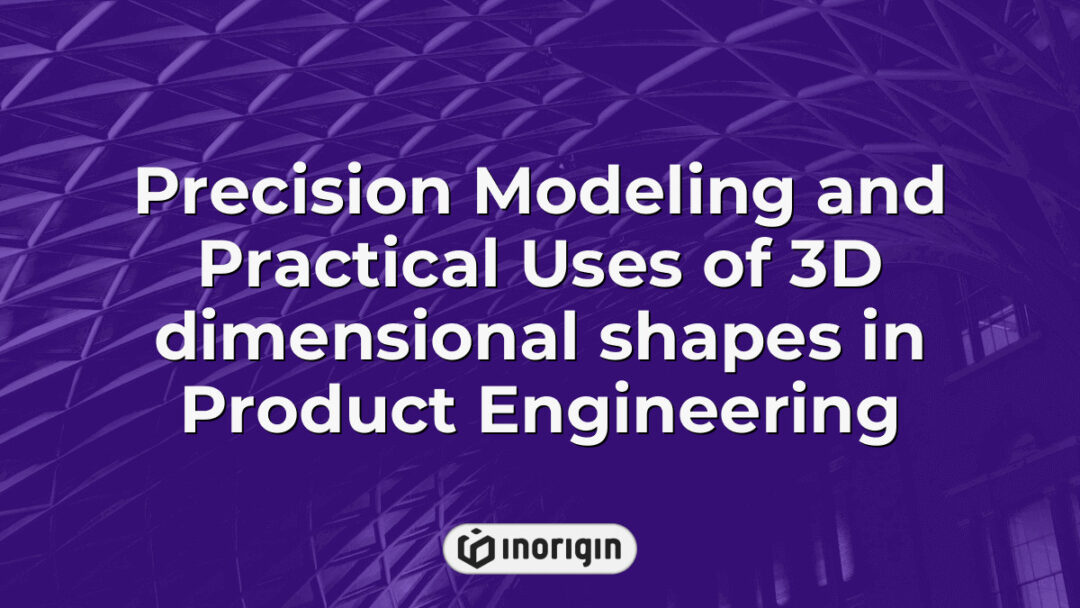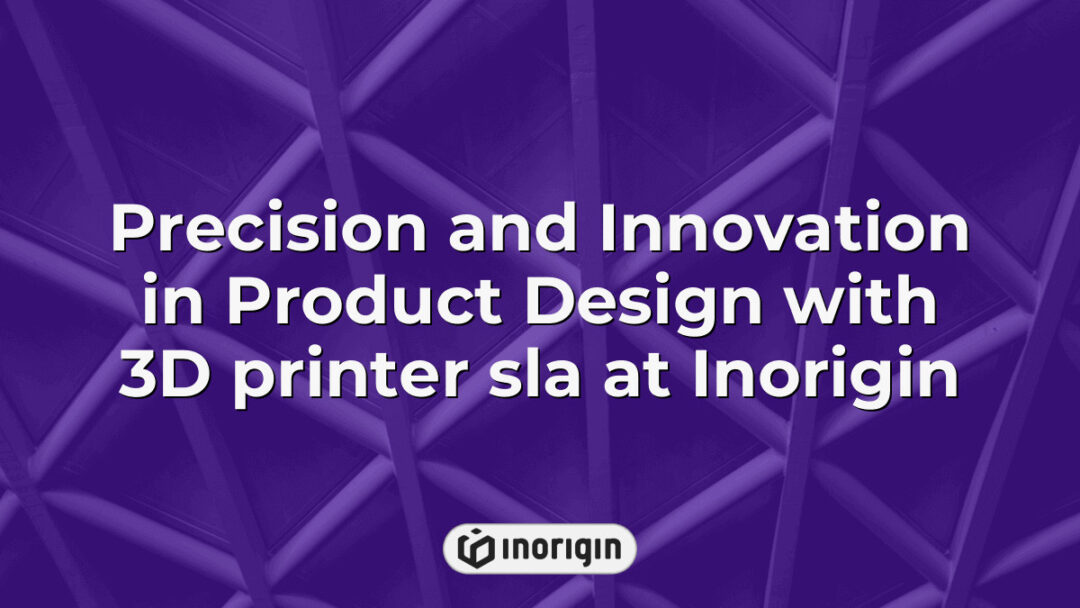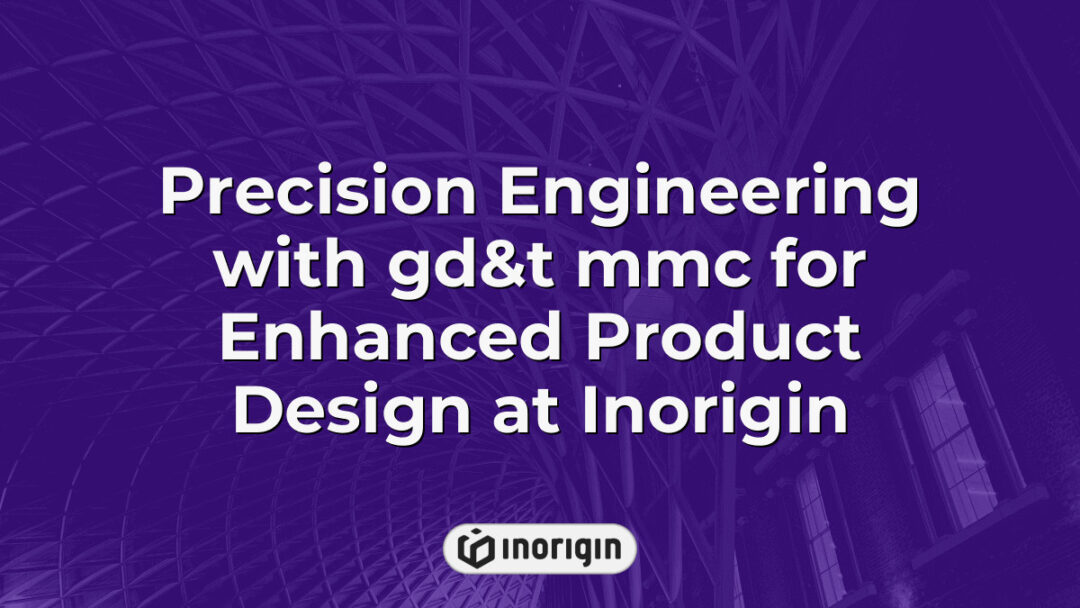Rapid prototyping is a revolutionary process that can significantly speed up product development, offering businesses the opportunity to iterate and innovate at lightning speed. By utilizing this cutting-edge technique, companies can quickly create prototypes of their products, allowing them to test ideas, gather feedback, and make necessary adjustments in record time. This accelerated approach not only saves valuable resources but also enables organizations to stay ahead of the competition by delivering new and improved products to market faster than ever before. In this article, we will explore how rapid prototyping can be a game-changer for product development processes and why it’s essential for staying competitive in today’s fast-paced business world.
| Aspect | Key Takeaway |
|---|---|
| Rapid Prototyping Overview | How can rapid prototyping accelerate product development? It enables swift creation and iteration of prototypes, significantly reducing time-to-market while enhancing innovation and design quality. |
| Key Process Stages | The rapid prototyping process includes ideation, design, testing, and production—each stage focusing on quick iterations and feedback to streamline product development timelines. |
| Technique Selection | Choosing suitable methods like FDM or DLP 3D printing based on project requirements, cost, and material compatibility is essential for efficient and cost-effective prototyping. |
| Agile Integration | Integrating rapid prototyping within agile methodologies fosters continuous improvement, faster decision-making, and effective stakeholder collaboration throughout development. |
| Cross-functional Collaboration | Effective teamwork across design, engineering, and marketing departments accelerates innovation by enabling open communication and swift iteration cycles. |
| Overcoming Challenges | Structured prototype testing and proactive collaboration help identify issues early, minimizing delays and ensuring the final product aligns with business goals and customer expectations. |
| Real-world Impact | Successful use cases demonstrate that rapid prototyping drives faster innovation, allowing companies to adapt quickly and deliver market-ready products with superior functionality and design. |
Understanding The Concept Of Rapid Prototyping In Product Development
To understand the concept of rapid prototyping in product development, it is essential to recognize its role in accelerating the overall process. Rapid prototyping involves creating a preliminary version of a product quickly and efficiently to test its functionality and design before moving forward with full-scale production. By utilizing rapid prototyping techniques such as 3D printing or computer-aided design, companies can significantly reduce the time it takes to bring a new product to market. This approach allows for faster iterations and adjustments based on real-time feedback, ultimately speeding up the entire product development cycle.
As we delve deeper into exploring the benefits of rapid prototyping for accelerating product development, it becomes clear that this method offers numerous advantages over traditional manufacturing processes.
Exploring The Benefits Of Rapid Prototyping For Accelerating Product Development
Rapid prototyping is like the turbo boost button for product development, propelling ideas from concept to reality at lightning speed. By exploring the benefits of rapid prototyping for accelerated design, companies can significantly reduce time-to-market and streamline their innovation processes. One key advantage of rapid prototyping is its ability to quickly iterate on designs based on user feedback, allowing for continuous improvement without costly delays or setbacks.
Furthermore, rapid prototyping enables cross-functional teams to collaborate more effectively by providing a tangible representation of the product early in the development process. This not only accelerates decision-making but also ensures that all stakeholders are aligned on the vision for the final product. Overall, incorporating rapid prototyping into product development workflows can lead to faster innovation cycles and ultimately drive business growth.
Transitioning seamlessly into identifying the key stages of the rapid prototyping process, it becomes clear how each step contributes to accelerating product development and bringing ideas to life with unprecedented speed and efficiency.
Identifying The Key Stages Of Rapid Prototyping Process
Imagine rapid prototyping as a high-speed train hurtling towards your destination of product development. The key stages of this process are crucial for accelerating the journey from concept to final product. Firstly, ideation is where ideas are brainstormed and refined to create a solid foundation. Next comes design, where these ideas take shape into tangible prototypes that can be tested and iterated upon. Then, testing allows for feedback and adjustments to be made quickly, ensuring the final product meets all requirements. Lastly, production brings everything together for mass manufacturing.
As you embark on your rapid prototyping journey, it’s essential to understand the significance of each stage in accelerating your product development timeline. By efficiently moving through ideation, design, testing, and production, you can streamline the process and achieve faster results. Now, let’s delve deeper into choosing the right rapid prototyping techniques for your project…
Choosing The Right Rapid Prototyping Techniques For Your Project
When it comes to accelerating product development, choosing the right rapid prototyping techniques for your project is crucial. By selecting the most suitable methods, you can significantly reduce time to market and streamline the overall process. Whether it’s additive manufacturing, CNC machining, or 3D printing, understanding which technique aligns best with your project requirements is key. Additionally, considering factors such as cost-effectiveness, speed of production, and material compatibility will help in making an informed decision.
Tip: Remember that the goal of rapid prototyping is not just to create a prototype quickly but also to iterate efficiently based on feedback. Keep communication channels open with stakeholders and continuously evaluate the effectiveness of your chosen techniques throughout the development process.
As we delve into integrating rapid prototyping into agile product development methodologies, it becomes evident that the seamless transition between these two approaches can lead to even greater efficiency and innovation within your project.
Integrating Rapid Prototyping Into Agile Product Development Methodologies
Ironically, while some may view rapid prototyping as an additional step in the product development process, integrating this technique into agile methodologies can actually streamline and accelerate overall progress. By utilizing design prototypes that are quickly created and tested, teams can gather valuable feedback early on and make necessary adjustments swiftly. This seamless integration allows for a more efficient workflow, eliminating potential roadblocks and ensuring that the final product meets customer needs effectively.
Furthermore, incorporating rapid prototyping into agile product development methodologies enables teams to iterate rapidly and continuously improve their designs based on user feedback. The ability to quickly create multiple versions of a prototype allows for quick decision-making and ultimately leads to faster time-to-market. Design iterations can be easily shared with stakeholders for input, fostering collaboration and alignment throughout the entire development process. Ultimately, by embracing rapid prototyping within an agile framework, companies can significantly reduce time and costs associated with traditional product development methods.
Transitioning from the benefits of integrating rapid prototyping into agile methodologies, it is essential to address common challenges that may arise during this process.
Overcoming Common Challenges In Rapid Prototyping For Product Development
As the saying goes, "practice makes perfect," and this rings true when it comes to overcoming common challenges in rapid prototyping for product development. One of the key hurdles that companies face is efficiently testing prototypes to ensure they meet the desired specifications before moving forward with production. By implementing a structured approach to prototype testing, such as utilizing user feedback or conducting iterative testing cycles, organizations can streamline their product development process and minimize costly errors down the line.
Furthermore, embracing collaboration between cross-functional teams during the prototyping phase can help address any potential roadblocks early on in the development process. This open communication allows for swift adjustments and improvements to be made, ensuring that the final product meets both customer expectations and business objectives. Additionally, integrating rapid prototyping tools and technologies into existing agile methodologies can further enhance efficiency and innovation within an organization’s product development lifecycle.
By proactively tackling these common challenges in rapid prototyping, companies can accelerate their product development timeline while maintaining high-quality standards. Testing prototypes rigorously and fostering collaboration across teams are essential steps towards achieving successful outcomes in today’s fast-paced market environment. In the next section about maximizing cost-efficiency and time savings with rapid prototyping…
Maximizing Cost-efficiency And Time Savings With Rapid Prototyping
Rapid prototyping isn’t just a game-changer; it’s a revolutionary tool that can speed up product development like never before. By maximizing cost-efficiency and time savings with rapid prototyping, companies can significantly reduce the traditional barriers to innovation. One key advantage of rapid prototyping is its ability to quickly produce prototypes for testing and iteration, allowing teams to identify design flaws early on in the process. This not only saves valuable time but also ensures that final products are more refined and market-ready.
Moreover, by streamlining the development cycle, rapid prototyping enables businesses to stay ahead of competitors in today’s fast-paced market environment. The ability to rapidly iterate on designs and gather feedback from stakeholders accelerates decision-making processes, ultimately leading to quicker go-to-market strategies. With these agile methodologies in place, companies can adapt to changing consumer demands and technological advancements with ease.
Transitioning smoothly into leveraging rapid prototyping for iterative design improvements, teams can harness the power of continuous learning and refinement throughout the product development lifecycle.
Leveraging Rapid Prototyping For Iterative Design Improvements
By leveraging rapid prototyping for iterative design improvements, companies can accelerate the pace of new product development. This approach allows teams to quickly create and test multiple versions of a product, gathering valuable feedback and making necessary adjustments in real-time. By incorporating user insights early on in the process, organizations can ensure that their final product meets customer needs and expectations effectively. Rapid prototyping enables designers to experiment with various features, functionalities, and aesthetics, leading to more innovative and refined solutions.
Moreover, this agile methodology promotes collaboration among team members from different departments, fostering a dynamic environment where ideas flow freely and decisions are made efficiently. Through constant communication and feedback exchange, cross-functional teams can work together seamlessly during rapid prototyping phases. This streamlined process not only accelerates product development but also enhances overall teamwork and creativity within the organization.
Collaborating Effectively With Cross-functional Teams During Rapid Prototyping
As we navigate the complex landscape of product development, collaborating effectively with cross-functional teams during rapid prototyping is akin to conducting a symphony where every instrument plays a crucial role in creating harmony. Just like how each musician contributes their unique sound to the overall melody, each team member brings their expertise and perspective to the table, enriching the process with diverse insights. Through this collaborative effort, innovation flourishes as ideas are shared, refined, and brought to life through rapid prototyping.
- Enhanced Communication:
- By fostering open communication channels between different departments such as design, engineering, and marketing, ideas flow freely and feedback loops are shortened.
- This leads to quicker decision-making processes and enables swift iterations based on real-time data and user input.
In this dynamic environment driven by collaboration and creativity, innovative solutions emerge from the collective efforts of individuals working towards a common goal. The synergy generated within cross-functional teams during rapid prototyping not only accelerates product development but also ensures that the end result meets or even exceeds customer expectations. Transitioning seamlessly into real-world examples of successful product development accelerated by rapid prototyping demonstrates how these principles translate into tangible outcomes for companies striving for excellence in today’s fast-paced market.
Real-world Examples Of Successful Product Development Accelerated By Rapid Prototyping
When it comes to accelerating product development, rapid prototyping is like a turbo boost for innovation. Real-world examples of successful product development accelerated by rapid prototyping showcase the power and potential of this cutting-edge approach. From tech giants like Apple revolutionizing the smartphone industry with iterative design processes to startups launching groundbreaking products in record time, rapid prototyping has become a game-changer in the world of product development. By quickly iterating on ideas, testing concepts, and gathering feedback from users, companies can bring innovative solutions to market faster than ever before.
These real-world examples illustrate how rapid prototyping can lead to remarkable success stories. For instance, the iconic Nest Learning Thermostat was developed using rapid prototyping techniques that allowed the team to refine their design based on user feedback quickly. Similarly, Tesla Motors utilized rapid prototyping to accelerate the development of their electric vehicles, leading to breakthroughs in battery technology and performance. By embracing agile methodologies and leveraging advanced tools like 3D printing and virtual simulations, these companies were able to achieve unprecedented speed and efficiency in bringing their products from concept to reality.
By showcasing these inspiring case studies of successful product development accelerated by rapid prototyping, we see firsthand the transformative impact this approach can have on innovation. Whether you’re designing consumer electronics or pioneering new medical devices, incorporating rapid prototyping into your product development process can help you stay ahead of the curve and deliver exceptional results. In today’s fast-paced business environment, embracing rapid prototyping isn’t just an option?it’s a necessity for those looking to thrive in a competitive marketplace.
Frequently Asked Questions
How Does Rapid Prototyping Differ From Traditional Product Development Methods?
Rapid prototyping and traditional product development methods differ in several key aspects. Firstly, rapid prototyping involves quickly creating physical models or prototypes of a product using 3D printing technology, allowing for faster iterations and adjustments based on feedback. In contrast, traditional product development often follows a linear process with longer timelines between design, testing, and production stages. Another difference lies in the level of flexibility offered by rapid prototyping, as it enables designers to make changes on-the-fly without significant delays or costs associated with tooling modifications.
Moreover, rapid prototyping encourages collaboration among cross-functional teams by providing tangible representations early in the design process. This helps to align stakeholders’ expectations and requirements more effectively compared to traditional methods where communication gaps can lead to misunderstandings and rework down the line. Additionally, the iterative nature of rapid prototyping allows for continuous improvement and innovation throughout the development cycle, ensuring that final products meet market demands and user needs efficiently.
By embracing rapid prototyping over traditional product development methods, companies can streamline their processes, reduce time-to-market, and foster a culture of experimentation and creativity within their teams. The ability to rapidly iterate designs based on real-world testing results in higher-quality products that resonate with customers while minimizing risks associated with costly redesigns later on. Ultimately, incorporating rapid prototyping into the product development workflow offers a competitive advantage by accelerating innovation cycles and driving sustainable growth in today’s fast-paced markets.
What Are Some Key Considerations When Selecting A Rapid Prototyping Technique For A Project?
When considering which rapid prototyping technique to use for a project, there are several key factors to keep in mind. Firstly, it’s crucial to assess the specific requirements of the project and determine which technique aligns best with those needs. Secondly, conducting thorough research on different prototyping methods will help in understanding their strengths and limitations. Additionally, evaluating the cost implications and timeline constraints can assist in selecting the most suitable technique for efficient product development.
Furthermore, focusing on the functionality and scalability of each rapid prototyping technique is essential for ensuring long-term success. Understanding how well a particular method can adapt to changes and improvements throughout the development process is vital for overall project efficiency. Moreover, collaborating with cross-functional teams and seeking input from various stakeholders can provide valuable insights into which technique would be most effective for achieving desired outcomes.
By carefully considering these key factors when choosing a rapid prototyping technique, companies can accelerate product development while maintaining quality standards and meeting customer expectations effectively. By weighing requirements, researching options thoroughly, assessing costs and timelines, prioritizing functionality and scalability, as well as involving diverse perspectives in decision-making processes, organizations can streamline their innovation efforts and bring products to market faster.
How Can Rapid Prototyping Help With Reducing Time-to-market For New Products?
Imagine rapid prototyping as a shortcut to success in product development, allowing companies to quickly bring their ideas to life and test them in the market. By using this innovative approach, businesses can significantly reduce their time-to-market for new products while maintaining high-quality standards. Rapid prototyping enables teams to iterate on designs swiftly, identify potential issues early on, and make necessary adjustments before mass production begins. This iterative process not only accelerates product development but also ensures that the final product meets customer needs and expectations.
In today’s fast-paced business environment, staying ahead of the competition requires agility and efficiency in bringing new products to market. With rapid prototyping tools such as 3D printing, companies can streamline their product development processes and respond more quickly to changing consumer demands. This agile approach allows organizations to gather valuable feedback from customers at an early stage, enabling them to make informed decisions and improvements based on real-world data. As a result, businesses can launch successful products faster and with greater confidence, ultimately driving growth and profitability.
By leveraging rapid prototyping technologies effectively, companies can gain a competitive edge by reducing their time-to-market for new products. This strategic advantage not only helps businesses seize opportunities in the marketplace but also enhances their ability to innovate and adapt to evolving customer preferences. In essence, rapid prototyping serves as a catalyst for accelerating product development cycles and achieving tangible results efficiently. Through continuous iteration and refinement, organizations can navigate the complexities of product design with ease and deliver value-added solutions that resonate with consumers.
Conclusion
Rapid prototyping acts as a swift horse in the race of product development, speeding up the journey from concept to market. By embracing this innovative approach and overcoming hurdles along the way, we can harness its power to drive success and lead us towards our destination with efficiency and precision.
Related posts:
- Agile Product Engineering Strategies for Seamless Innovation and Market Success
- Agile Product Management Strategies for Driving Innovation and Efficiency in Product Design
- Mastering Agile Product Development Through Collaborative Team Dynamics and Continuous Iteration
- How Can Rapid Prototyping Accelerate Your Product Development Timeline Through Streamlined Testing and Collaborative Design at Inorigin
- How Can Design Thinking Improve Product Engineering by Enhancing Cross-Disciplinary Innovation and User-Centric Solutions
- How Can Rapid Prototyping Improve Your Product Development Process? Real-World Benefits From Inorigin’s Engineering Studio




